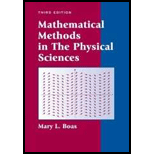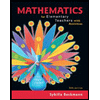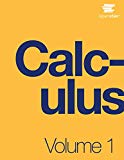
For each of the periodic functions in Problems 5.1 to 5.11, use Dirichlet’s theorem to find the value to which the Fourier series converges at
Want to see the full answer?
Check out a sample textbook solution
Chapter 7 Solutions
Mathematical Methods in the Physical Sciences
Additional Math Textbook Solutions
Using & Understanding Mathematics: A Quantitative Reasoning Approach (7th Edition)
Finite Mathematics for Business, Economics, Life Sciences and Social Sciences
A Survey of Mathematics with Applications (10th Edition) - Standalone book
A Problem Solving Approach To Mathematics For Elementary School Teachers (13th Edition)
Mathematics with Applications In the Management, Natural and Social Sciences (11th Edition)
Introductory Mathematics for Engineering Applications
 Discrete Mathematics and Its Applications ( 8th I...MathISBN:9781259676512Author:Kenneth H RosenPublisher:McGraw-Hill Education
Discrete Mathematics and Its Applications ( 8th I...MathISBN:9781259676512Author:Kenneth H RosenPublisher:McGraw-Hill Education Mathematics for Elementary Teachers with Activiti...MathISBN:9780134392790Author:Beckmann, SybillaPublisher:PEARSON
Mathematics for Elementary Teachers with Activiti...MathISBN:9780134392790Author:Beckmann, SybillaPublisher:PEARSON
 Thinking Mathematically (7th Edition)MathISBN:9780134683713Author:Robert F. BlitzerPublisher:PEARSON
Thinking Mathematically (7th Edition)MathISBN:9780134683713Author:Robert F. BlitzerPublisher:PEARSON Discrete Mathematics With ApplicationsMathISBN:9781337694193Author:EPP, Susanna S.Publisher:Cengage Learning,
Discrete Mathematics With ApplicationsMathISBN:9781337694193Author:EPP, Susanna S.Publisher:Cengage Learning, Pathways To Math Literacy (looseleaf)MathISBN:9781259985607Author:David Sobecki Professor, Brian A. MercerPublisher:McGraw-Hill Education
Pathways To Math Literacy (looseleaf)MathISBN:9781259985607Author:David Sobecki Professor, Brian A. MercerPublisher:McGraw-Hill Education





